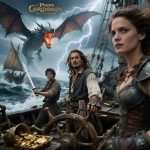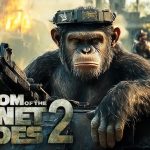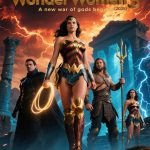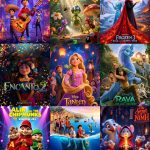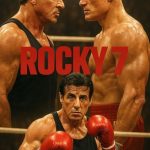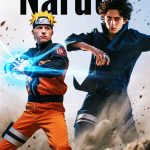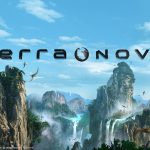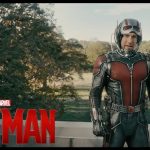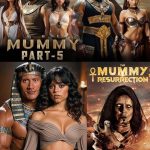Visual effects of the movie Alice in Wonderland (2010)
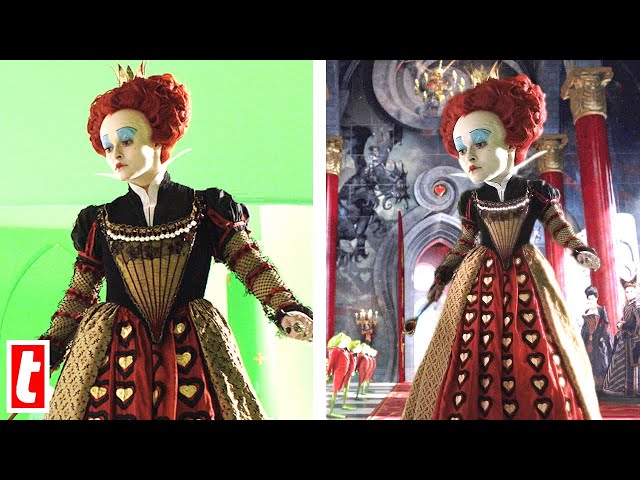
Related Movies:
Related Movies:
Related Movies:
The visual effects (VFX) in Alice in Wonderland (2010), directed by Tim Burton, were a crucial part of bringing the fantastical and surreal world of Wonderland to life. Known for its highly stylized, imaginative visuals, the film combined traditional and cutting-edge digital techniques to create an immersive, visually striking experience. Here’s a breakdown of the key elements of the visual effects in this film:
1. Creating Wonderland: A Surreal Landscape
-
Tim Burton’s Distinctive Aesthetic: Burton’s signature gothic and whimsical style is evident throughout the film. Wonderland is a colorful and distorted place where logic is turned on its head. The set design and VFX team worked closely together to create environments that felt both fantastical and dreamlike. Wonderland’s vivid colors, large-scale environments, and exaggerated proportions made it a visually compelling world.
-
CGI Environments: Many of the locations in Wonderland were created through CGI, including the massive tea party scene, the expansive Red Queen’s garden, and the Queen’s courtroom. The environments were designed with an exaggerated, almost abstract feel, emphasizing the warped nature of the world Alice has entered.
-
The Cheshire Cat’s Domain: The domain of the Cheshire Cat, particularly his appearances in the trees and disappearing acts, was created using CGI. The cat’s smile and body floating through the air became an iconic part of the film’s look, and the VFX team used sophisticated digital techniques to make him appear ethereal and playful.
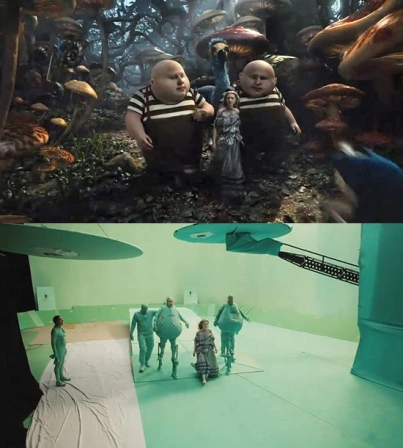
-
2. The Character Designs
-
The Red Queen (Helena Bonham Carter): One of the most iconic VFX elements of the film is the exaggerated size of the Red Queen’s head. Using a combination of practical prosthetics and CGI, the VFX team created the illusion of a huge head that contrasts with her small body. The visual effect was accomplished by creating a digital double for the head and blending it seamlessly with the live-action footage.
-
The White Queen (Anne Hathaway): The ethereal, almost ghostly appearance of the White Queen was achieved through a combination of practical makeup and visual effects. Her floating movements, particularly when she is portrayed walking above the ground, were enhanced with CGI to make her seem lighter and more delicate.
-
The Mad Hatter (Johnny Depp): The Mad Hatter’s wild, colorful look was complemented by CGI for his various fantastical expressions and exaggerated facial features, often enhanced by VFX to emphasize the whimsical nature of his character. There were moments in the film when his eyes and movements were amplified through digital effects to add to his eccentric personality.
-
The Cheshire Cat (voiced by Stephen Fry): The Cheshire Cat is perhaps one of the most memorable characters, and his seamless appearances and disappearances were achieved through CGI. The cat’s form was designed to be semi-transparent at times, and the VFX team created his smile as a floating, disembodied feature, which became an iconic visual element in the film. The cat’s transformation, from full form to disappearing to only a smile, required sophisticated tracking and compositing techniques.
3. Digital Compositing and Motion Capture
-
Motion Capture for the Caterpillar (voiced by Alan Rickman): The Blue Caterpillar was created using motion capture, with the animators capturing the movements of a performer to bring the insect to life. The caterpillar’s fluid movements and distinct shape were enhanced through visual effects, giving him a surreal, almost floating presence.
-
Compositing: The blending of live-action shots with digital environments and creatures was a vital aspect of Alice in Wonderland’s visual appeal. For example, the digital creatures, such as the tweedledee and tweedledum characters, were seamlessly integrated with the real-world settings. The film’s world is never quite grounded, with many elements looking like paintings or dreams that shift with the narrative.
4. The Use of 3D
-
The film was released in 3D, and the VFX team used depth and spatial effects to enhance the experience. The 3D was used creatively to immerse viewers in Wonderland, with objects floating towards the audience or oversized characters seemingly towering over Alice, making the environment feel larger than life. The 3D effects were used sparingly but effectively, particularly during scenes like the tea party, where characters seem to pop out of the screen, and the falling down the rabbit hole sequence.
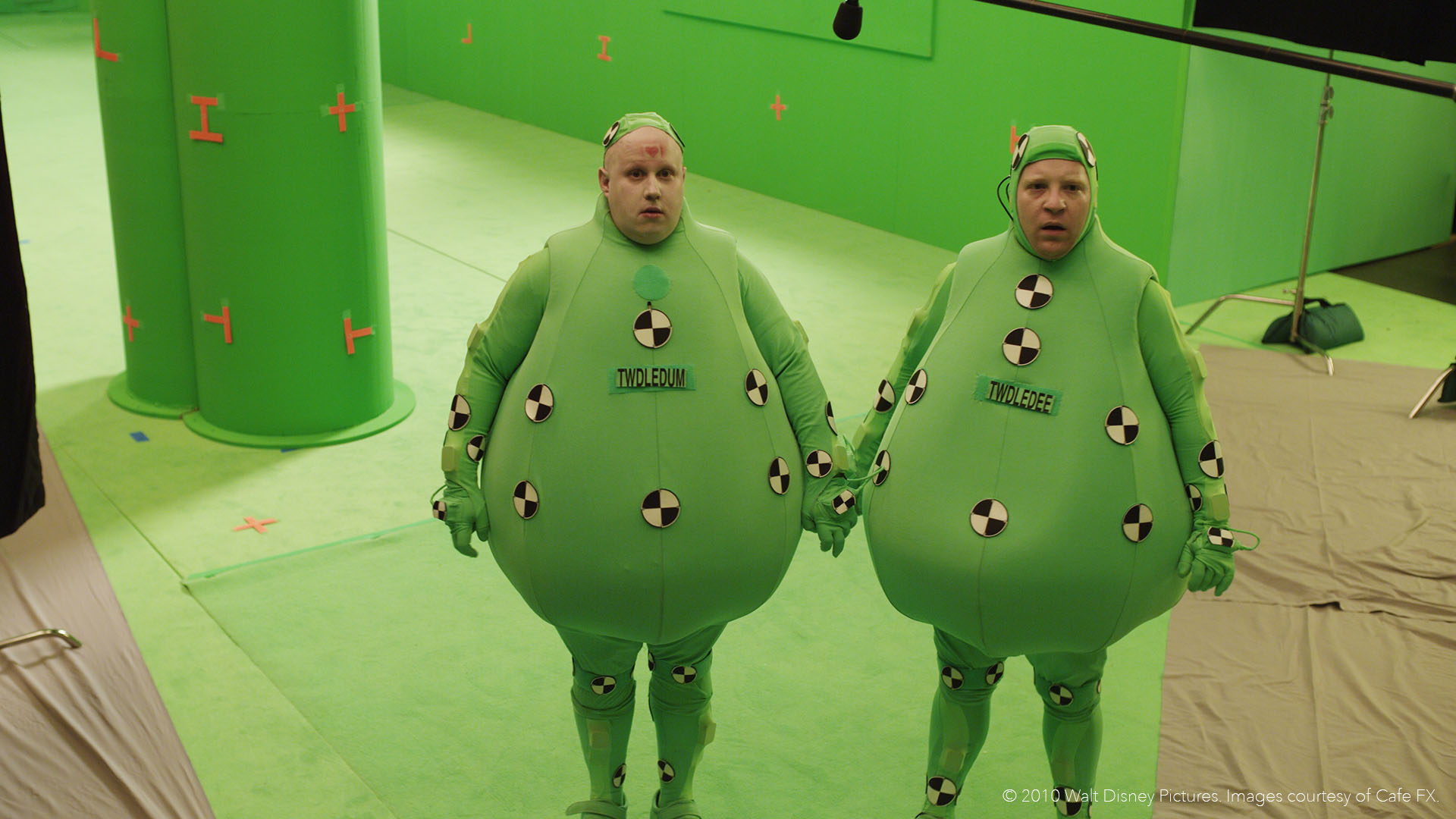
5. The Transformation of Alice
-
Alice’s transformations as she grows larger or smaller were enhanced through digital effects, which allowed her to change size in an exaggerated and whimsical manner. The shrinking and growing scenes, particularly when she drinks the potion or eats the cake, involved detailed compositing, digital rigging, and effects work to make Alice interact with her surroundings in a believable way as she shifted size.
6. Special Effects for Action Sequences
-
The battle between the Red Queen’s army and the White Queen’s army near the end of the film had multiple visual effects-heavy sequences. The March Hare’s chaotic attacks and the Jabberwocky fight scene, where Alice faces off against the dragon-like creature, were all brought to life using both practical and CGI effects.
-
The Jabberwocky was a complex digital creation, combining motion capture for the creature’s movements and detailed textures to give it a life-like, terrifying presence. The final battle scenes between Alice and the Jabberwocky required heavy use of CGI to integrate the creature into the physical environments and create intense action sequences.
-
7. Color and Lighting
-
The visual effects also played a crucial role in creating the film’s distinct color palette. Burton’s visual style is marked by high contrast, bold colors, and stylized lighting. The VFX team used color grading to emphasize the fantasy world, with the Red Queen’s palace painted in dark reds, while the White Queen’s realm was bathed in a soft, ethereal glow, underscoring their contrasting personalities.
-
The digital effects team used lighting to help distinguish the whimsical and darker elements of the film. The glowing mushroom forests, the hazy scenes inside the Red Queen’s castle, and the lush, vivid landscapes of Wonderland were all enhanced through CGI lighting and rendering techniques.
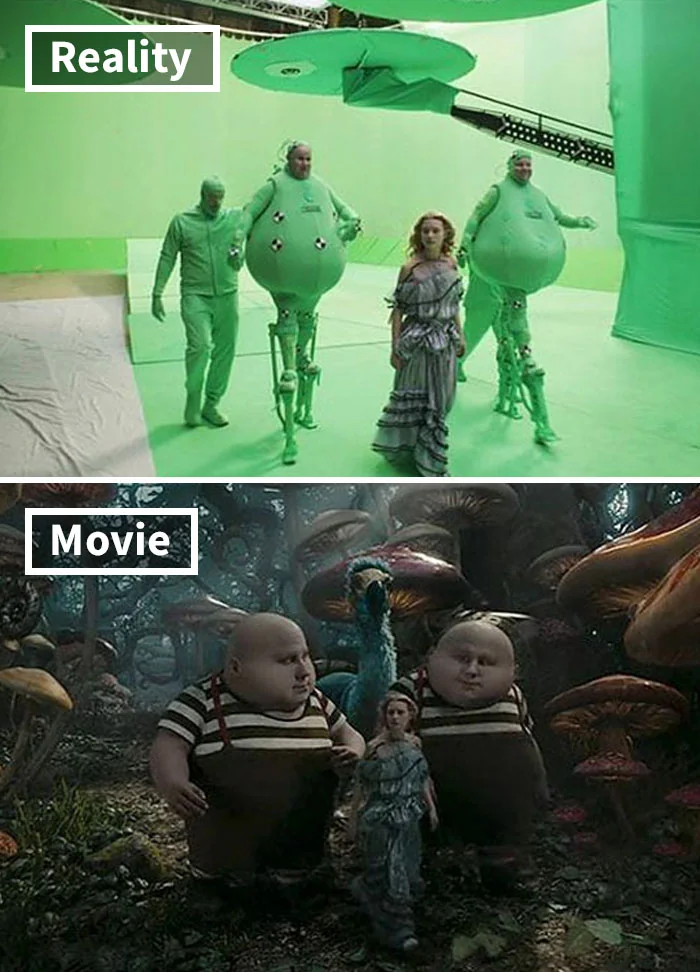
8. Visual Effects Team
-
The VFX for Alice in Wonderland (2010) were done by The Moving Picture Company (MPC), Double Negative, and Rising Sun Pictures. These studios were responsible for creating the groundbreaking digital effects that brought Wonderland’s fantastical creatures and environments to life. The team used the latest technology in CGI, motion capture, and digital compositing to create a seamless blend between live-action and computer-generated imagery.
Final Thoughts:
Alice in Wonderland (2010) set a new standard for visual storytelling in fantasy films, blending Tim Burton’s eccentric vision with cutting-edge technology. The seamless integration of CGI with live-action performances brought the whimsical world of Wonderland to life, creating a visually immersive experience for the audience. The movie’s use of color, 3D effects, and intricate creature designs showcased the potential of visual effects to create a truly unique cinematic experience.
